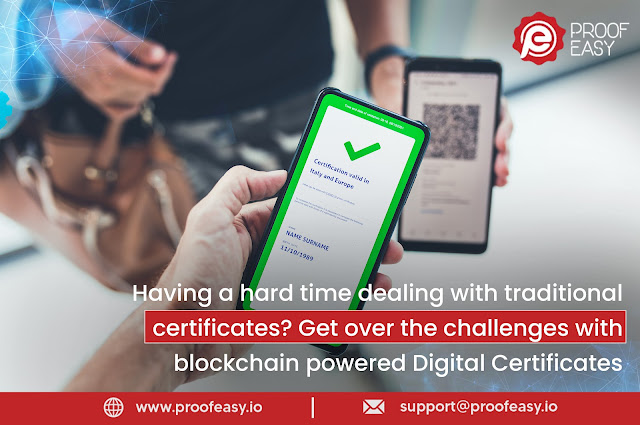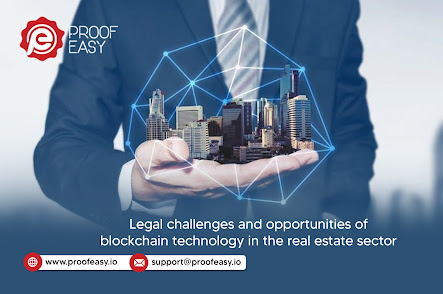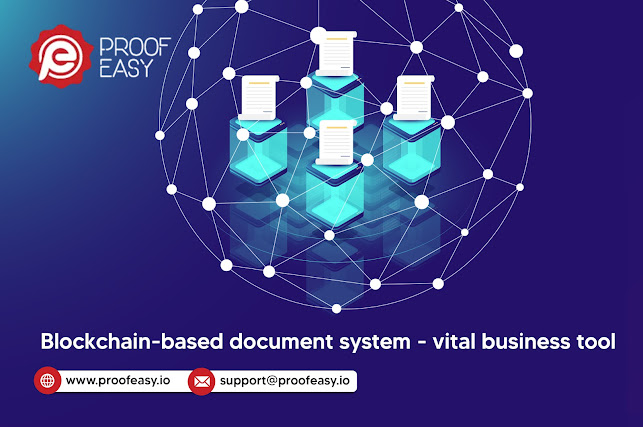One Simple Solution for Top Traditional Certificate Challenges
In the fast-evolving landscape of education and professional development, the significance of certificates cannot be overstated. They serve as badges of achievement, proof of skill mastery and keys to unlocking new opportunities.
However, the traditional methods of issuing, storing and verifying certificates have their fair share of challenges. But with changing times where every aspect of our world is transitioning to become digital - the popularity of digital certificates is growing.
Plus, with the advent of blockchain technology – a game-changer that holds the promise to transform the way we handle certificates. Whether it is to verify credentials or leaving less paper trails, the benefits of blockchain powered digital certificates are many.
In this blog, we will look into the top challenges associated with traditional certificates and explore how blockchain-powered digital certificates can rise above these challenges.
Challenge #1 Counterfeiting and Fraud
Traditional paper certificates are prone to counterfeiting and fraud. The ease with which documents can be replicated combined with advancements in technology, makes it increasingly difficult to discern authentic certificates from counterfeit ones. This poses a serious threat to the credibility of individuals and institutions.
Solution: Blockchain's inherent immutability and transparency can thwart counterfeiters. Each digital certificate issued is recorded in a decentralized and tamper-proof ledger.
This ensures that certificates cannot be duplicated or tampered with, as any alteration would require consensus from the entire network. Verification becomes as simple as verifying the certificate against the unalterable record on the blockchain.
Challenge #2 Verification Delays
Traditional certificates often entail a lengthy and cumbersome process of manual verification. This process can be particularly frustrating for employers, educational institutions and other parties seeking to authenticate an individual's credentials.
Solution: Blockchain-based digital certificates facilitate instantaneous verification. Authorized parties can quickly verify credentials and ensure the authenticity of a certificate without the need for intermediaries.
This streamlines the entire verification process, saving time and reducing administrative burden.
Challenge #3 Lost or Damaged Certificates
Physical certificates are susceptible to loss, damage and deterioration over time. Replacing these certificates can be an expensive and time-consuming ordeal for both individuals and institutions.
Solution: Digital certificates stored on a blockchain are immune to physical damage. Individuals have secure and lifetime access to their certificates eliminating the risk of loss.
Moreover, the authenticity of the certificate remains intact regardless of how much time has passed.
Challenge #4 Limited Accessibility
Traditional certificates are often constrained by geographical limitations. Sending physical certificates internationally can result in delays, shipping costs and potential loss.
Solution: Digital certificates break down geographical barriers. They can be accessed and shared globally with just a few clicks. This kind of accessibility enhances the recognition and credibility of an individual's achievements across borders.
Challenge #5 Limited Data
Paper certificates convey limited information. They don't capture the dynamic and evolving nature of skills and accomplishments.
Solution: Blockchain-powered digital certificates can embed a wealth of information, including detailed course descriptions, assessment results and even links to relevant projects.
Inclusion of such comprehensive data provides a holistic view of an individual's capabilities, fostering more informed decisions by employers and institutions.
Challenge #6 Cost and Sustainability
Producing and distributing paper certificates can be expensive and environmentally unsustainable due to the use of resources like paper, ink and shipping materials.
Solution: Digital certificates significantly reduce the environmental impact by eliminating the need for physical materials. Moreover, the cost of producing and distributing digital certificates is lower.
Hence, making it an economically viable option for both issuers and recipients.
Conclusion
Blockchain technology is poised to revolutionize the way we perceive and manage certificates. As we address the various challenges of using traditional certificates, we can clearly see how blockchain-powered digital certificates are better for the world that we live in today.
The immutability, instant verification, global accessibility, comprehensive data and sustainability of digital certificates present a compelling case for their adoption. If you want to put a rest to all the challenges of traditional certificates for once and all then it is high time to invest in a blockchain power digital certificate system.
ProofEasy is an effective platform that can offer you with this solution. Check out their website for more information on how they can help.




Comments
Post a Comment